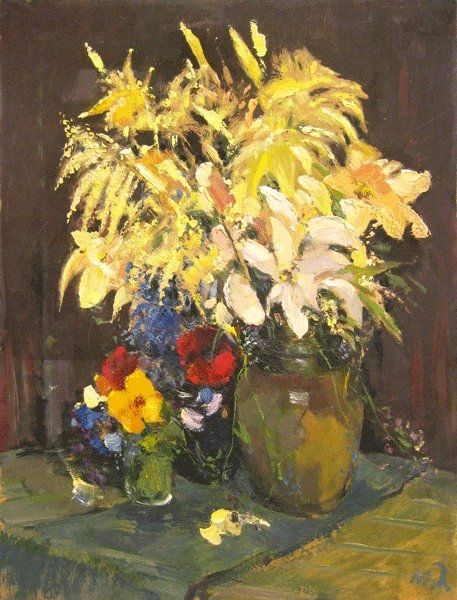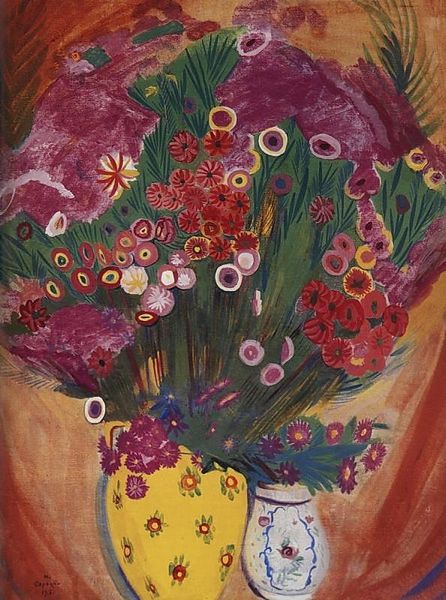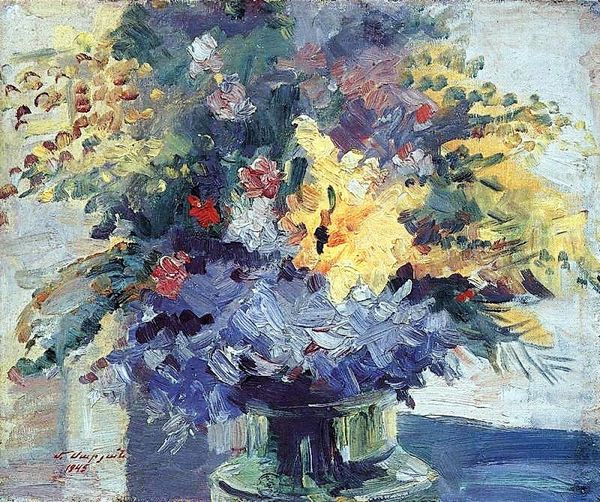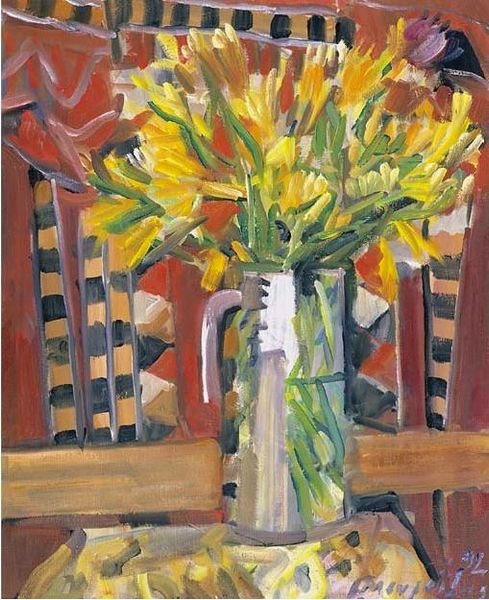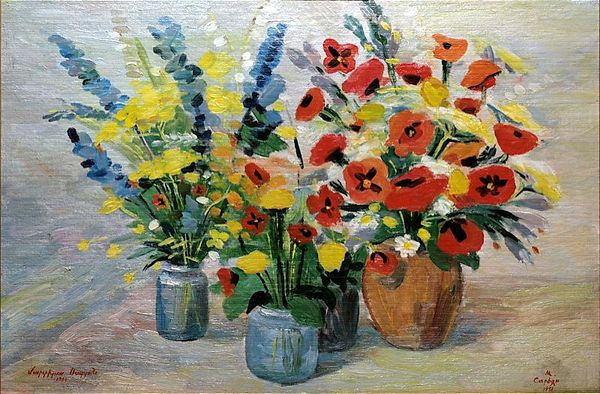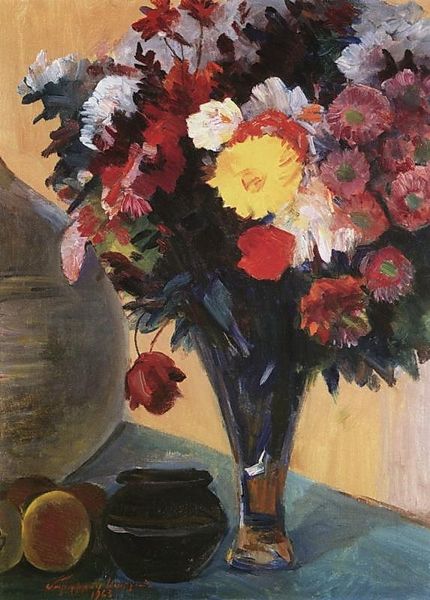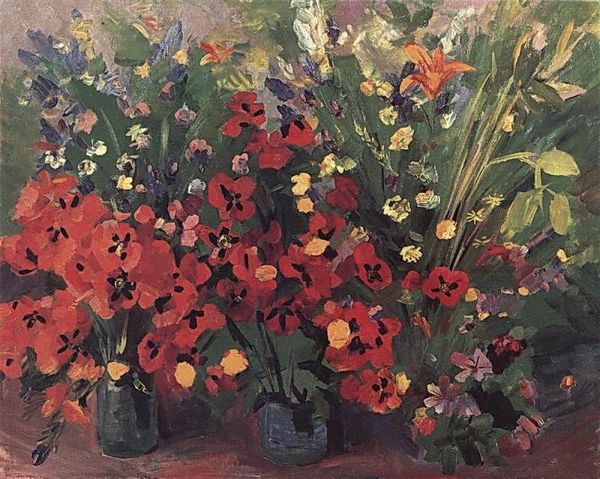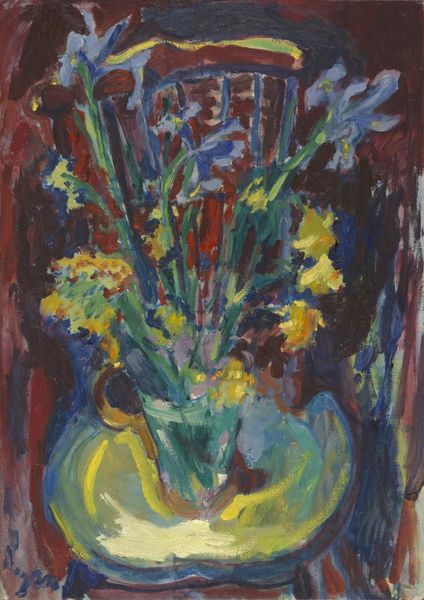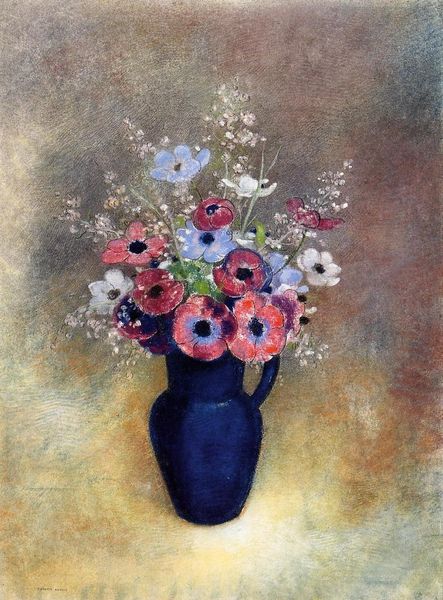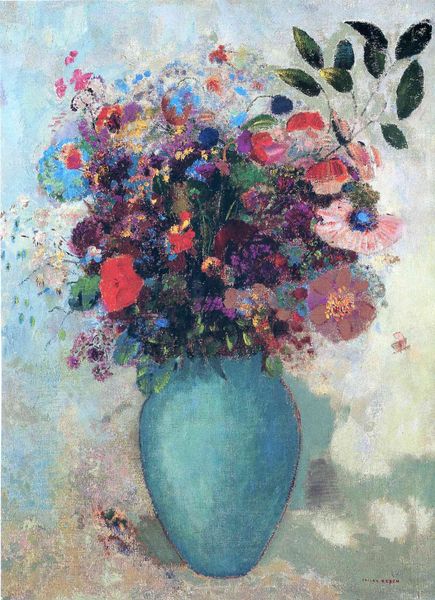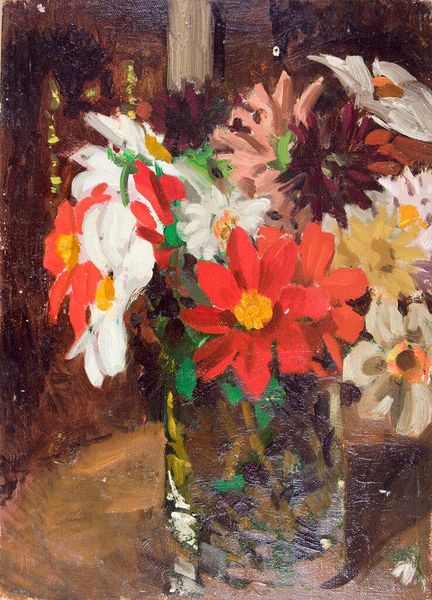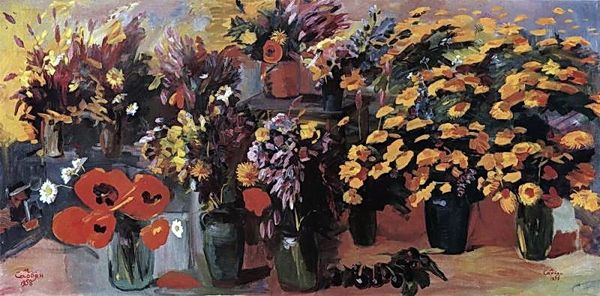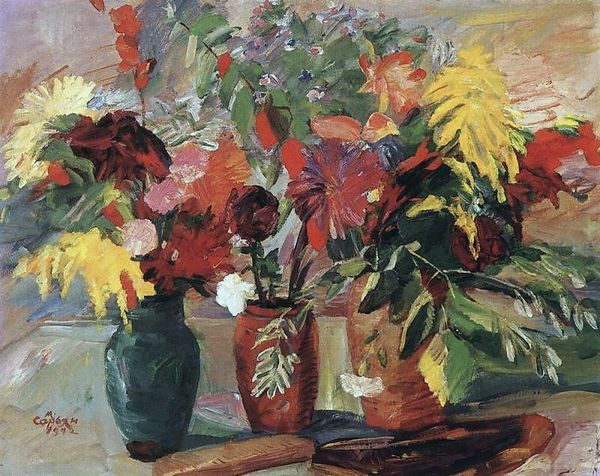
Flowers of Armenia 1916
0:00
0:00
martirossarian
Museum of Russian Art (Tereshchenko Museum), Kyiv, Ukraine
painting, oil-paint
#
art-nouveau
#
painting
#
oil-paint
#
flower
#
geometric
#
modernism
Dimensions: 72 x 65 cm
Copyright: Public domain US
Editor: Here we have "Flowers of Armenia," an oil painting by Martiros Sarian from 1916. The painting has this beautiful bouquet, very colourful with these deep yellows and purples popping out at you, it’s quite lovely. How do you interpret this work? Curator: Beyond the lovely colours, consider when and where Sarian painted this. 1916, during the Armenian genocide. How might this vibrant depiction of Armenian flora serve as an act of cultural preservation, a resistance against erasure? Think of flowers as coded symbols – are they specific to the region? Editor: Oh wow, I didn't even consider that. So, it is like he's not just painting pretty flowers, he's making a statement? I notice the Art Nouveau and Modernism influences here – does that play into your interpretation? Curator: Absolutely. The stylised, almost geometric rendering of the flowers pulls away from pure representation. It becomes about memory, about identity asserted through abstraction. The geometric shapes you noticed abstract the natural form, nodding towards modernism while rooted in tradition. Do you see this as inherently political, even subversive, in that context? Editor: It does feel very powerful knowing the history behind it. So what I saw as 'pretty' becomes something so much more defiant? It definitely brings new perspective to consider it a form of cultural resistance. Curator: Precisely! And it reveals the multifaceted ways art can operate – as beauty, memory, resistance, all intertwined. That's the importance of engaging with context. Editor: This really makes me see beyond the surface.
Comments
No comments
Be the first to comment and join the conversation on the ultimate creative platform.

